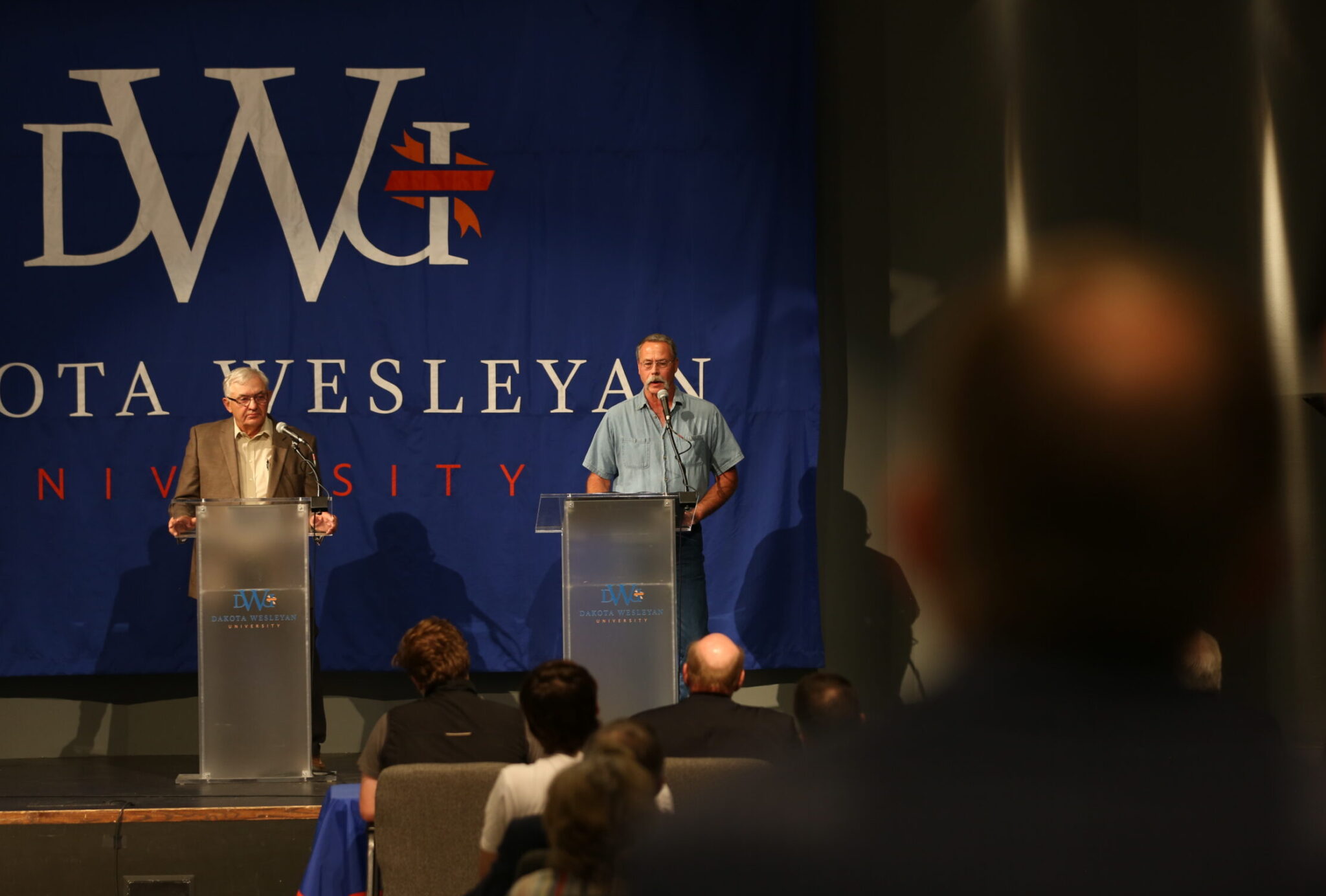
Joshua Haiar, South Dakota Searchlight
The measure on South Dakota’s Nov. 5 ballot that addresses carbon dioxide pipelines is either a bill of rights for landowners or a seizure of authority from local governments, depending on the person describing it.
During the last legislative session in Pierre, state lawmakers passed and Republican Gov. Kristi Noem signed Senate Bill 201. Opponents gathered more than 31,000 petition signatures to refer the law to voters. On the ballot, it’s Referred Law 21. A yes vote supports the law passed by legislators and Noem, while a no vote opposes the law.
The law would implement a list of protections and incentives for landowners and counties impacted by the construction of carbon dioxide pipelines. That’s the “bill of rights” part, according to the law’s supporters.
But it would also require local governments to demonstrate to state regulators that their restrictions on pipeline locations are reasonable, rather than the pipeline company having to prove those regulations are unreasonable. That’s the seizure of local authority, according to the law’s opponents.
The path to the ballot
The genesis of the debate over carbon pipelines is a proposal from Iowa-based Summit Carbon Solutions. It has partnered with ethanol producers, including Sioux Falls-based Poet, to capture some of the CO2 emitted by 57 ethanol plants in several midwestern states — including eastern South Dakota — and send it via pipeline for underground storage in North Dakota. The project would capitalize on federal tax credits that incentivize the prevention of climate-warming greenhouse gas emissions.
Some landowners along the pipeline route oppose the project because they don’t want the pipeline under their land. They oppose Summit’s attempted use of eminent domain to gain court-ordered access to their land and are concerned about potentially deadly leaks of carbon dioxide plumes. Similar debates are occurring in other states on the proposed route. Iowa has granted the project a permit, but it’s contingent on approval in the Dakotas, where Summit has not yet obtained permits.
Legislative sponsors of what became Referred Law 21 described it as a compromise between pipeline opponents and supporters, guaranteeing protections and incentives for landowners while maintaining a regulatory path for pipelines. The compromise effort arose after some legislators failed in their efforts to ban eminent domain for carbon pipelines. Referred Law 21 does not address eminent domain.
Another factor in the debate over the legislation was the role of counties. Some county commissions, prodded by pipeline opponents, have passed local ordinances with strict restrictions on the locations of pipelines.
Under existing law, those local ordinances apply unless the state Public Utilities Commission decides to declare them unreasonably restrictive. If Referred Law 21 takes effect, the burden would flip. Counties would have to prove to the state commission that their ordinances are reasonable.
The proposed law says that once the state issues a permit for a transmission project such as a pipeline, it automatically overrides any local rules. Local regulations would no longer be applicable unless state regulators require compliance with local laws as part of the permit.
Some proponents of Referred Law 21 say current state law makes it too easy for a local body opposed to a multi-state pipeline project to hold up construction. They say if local officials are confident their regulations are reasonable, they can rest easy knowing state regulators will uphold them.

“There is no wording in Senate Bill 201, now Referred Law 21, that diminishes the counties’ rights in any way,” said Walt Bones, a proponent of the law, during a September debate in Mitchell. Bones is a former secretary of the state Department of Agriculture.
Opponents are not buying it.
“Senate Bill 201, now Referred Law 21, takes away the voice of those local governments,” argued Jim Eschenbaum, an opponent of the law. Eschenbaum is a Hand County commissioner.
Landowner bill of rights
The law includes landowner protections, coined the “Landowner Bill of Rights” by backers in the Legislature.
They include requiring carbon pipeline companies, rather than landowners or local governments, to be liable for any damages caused by pipelines. The pipelines would also have to be buried at least 4 feet deep, and companies would have to share their pipeline rupture modeling data.

Counties could also collect a surcharge of up to $1 per linear foot of CO2 pipeline, with at least half of the money going toward property tax relief for affected landowners. The remaining funds could be used at the county’s discretion.
Plus, local governments could require transmission projects such as pipelines to enter road usage agreements to help pay for the maintenance and repair of roads damaged during construction activity.
“This is all about landowner rights, and getting some funding source back to counties,” Bones said. “That’s all this is. It’s not a referendum on a pipeline. It’s nothing more than this list of landowner rights and protections, and a funding source.”
Opponents say many of the protections and incentives in the bill are already part of county and landowner negotiations with Summit.
“They call it the ‘Landowner Bill of Rights.’ It is Summit’s bill of rights,” said Eschenbaum during a recent rally in rural Canton. “They said they’d do all that stuff before drafting the bill even started.”
Eschenbaum added during his September debate with Bones that “the Legislature has no business negotiating terms on peoples’ private property.”
Proponents counter that landowners could still negotiate the location of the pipeline, how much they will be paid, and additional easement terms.
